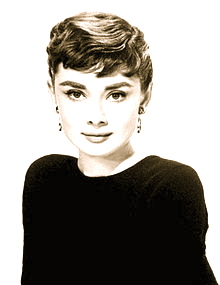Audrey Hepburn
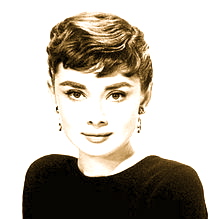
Audrey Hepburn Documentary
Audrey Hepburn (/ˈɔːdri ˈhɛpˌbɜrn/; born Audrey Kathleen Ruston; 4 May 1929 – 20 January 1993) was a British actress and humanitarian. Recognised as a film and fashion icon, Hepburn was active during Hollywood’s Golden Age. She was ranked by the American Film Institute as the third greatest female screen legend in the history of American cinema and has been placed in the International Best Dressed List Hall of Fame. She is also regarded by some to be the most naturally beautiful woman of all time.
Born in Ixelles, a district of Brussels, Hepburn spent her childhood between Belgium, England and the Netherlands, including German-occupied Arnhem during the Second World War. In Amsterdam, she studied ballet with Sonia Gaskell before moving to London in 1948 to continue her ballet training with Marie Rambert and perform as a chorus girl in West End musical theatre productions. She spoke several languages including English, French, Dutch, Italian, Spanish, and German.
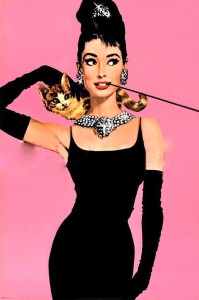 After appearing in several British films and starring in the 1951 Broadway play Gigi, Hepburn played the lead role in Roman Holiday (1953), for which she was the first actress to win an Academy Award, a Golden Globe and a BAFTA Award for a single performance. The same year, she won a Tony Award for Best Lead Actress in a Play for Ondine. She went on to star in a number of successful films, such as Sabrina (1954), The Nun’s Story (1959), Breakfast at Tiffany’s (1961), Charade (1963), My Fair Lady (1964) and Wait Until Dark (1967), for which she received Academy Award, Golden Globe and BAFTA nominations. Hepburn remains one of few people who have won Academy, Emmy, Grammy, and Tony Awards. She won a record three BAFTA Awards for Best British Actress in a Leading Role.
After appearing in several British films and starring in the 1951 Broadway play Gigi, Hepburn played the lead role in Roman Holiday (1953), for which she was the first actress to win an Academy Award, a Golden Globe and a BAFTA Award for a single performance. The same year, she won a Tony Award for Best Lead Actress in a Play for Ondine. She went on to star in a number of successful films, such as Sabrina (1954), The Nun’s Story (1959), Breakfast at Tiffany’s (1961), Charade (1963), My Fair Lady (1964) and Wait Until Dark (1967), for which she received Academy Award, Golden Globe and BAFTA nominations. Hepburn remains one of few people who have won Academy, Emmy, Grammy, and Tony Awards. She won a record three BAFTA Awards for Best British Actress in a Leading Role.
She appeared in fewer films as her life went on, devoting much of her later life to UNICEF. Although contributing to the organisation since 1954, she worked in some of the most profoundly disadvantaged communities of Africa, South America and Asia between 1988 and 1992. She was awarded the Presidential Medal of Freedom in recognition of her work as a UNICEF Goodwill Ambassador in December 1992. A month later, Hepburn died of appendiceal cancer at her home in Switzerland at the age of 63. She was not related to actress Katharine Hepburn.
Early Life
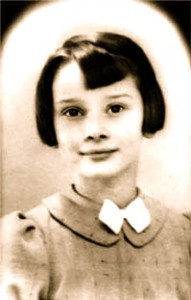 Audrey Hepburn was born Audrey Kathleen Ruston on 4 May 1929 at number 48 Rue Keyenveld in Ixelles, a municipality in Brussels, Belgium. Her father, Joseph Victor Anthony Ruston (1889–1980), was a British subject born in Úžice, Bohemia, to Anna Ruston (née Wels), of Austrian descent, and Victor John George Ruston, of British and Austrian descent. A one-time honorary British consul in the Dutch East Indies, Ruston had earlier been married to Cornelia Bisschop, a Dutch heiress. Although born Ruston, he later double-barrelled the surname to the more “aristocratic” Hepburn-Ruston, mistakenly believing himself descended from James Hepburn, third husband of Mary, Queen of Scots.
Audrey Hepburn was born Audrey Kathleen Ruston on 4 May 1929 at number 48 Rue Keyenveld in Ixelles, a municipality in Brussels, Belgium. Her father, Joseph Victor Anthony Ruston (1889–1980), was a British subject born in Úžice, Bohemia, to Anna Ruston (née Wels), of Austrian descent, and Victor John George Ruston, of British and Austrian descent. A one-time honorary British consul in the Dutch East Indies, Ruston had earlier been married to Cornelia Bisschop, a Dutch heiress. Although born Ruston, he later double-barrelled the surname to the more “aristocratic” Hepburn-Ruston, mistakenly believing himself descended from James Hepburn, third husband of Mary, Queen of Scots.
Her mother, Baroness Ella van Heemstra (1900–1984), was a Dutch aristocrat and the daughter of Baron Aarnoud van Heemstra, who was mayor of Arnhem from 1910 to 1920 and served as Governor of Dutch Suriname from 1921 to 1928. Ella’s mother was Elbrig Willemine Henriette, Baroness van Asbeck (1873–1939), who was a granddaughter of jurist Dirk van Hogendorp. At age nineteen, Ella had married Jonkheer (Esquire) Hendrik Gustaaf Adolf Quarles van Ufford, but they divorced in 1925. Hepburn had two half-brothers from this marriage who were both born in the Dutch East Indies: Jonkheer Arnoud Robert Alexander Quarles van Ufford (1920–1979) and Jonkheer Ian Edgar Bruce Quarles van Ufford (1924–2010). Ella, Baroness van Heemstra, was named Dame of the Most Venerable Order of the Hospital of Saint John of Jerusalem by Queen Elizabeth II on 7 September 1971.
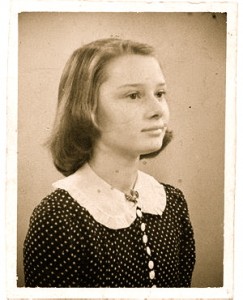 Ruston and van Heemstra married in the Dutch-Colonial Batavia, Dutch East Indies in September 1926. They moved back to Europe, to Ixelles in Belgium, where Hepburn was born in 1929. In January 1932 the family moved on to Linkebeek, a nearby Brussels municipality. Although born in Belgium, Hepburn held British citizenship through her father.
Ruston and van Heemstra married in the Dutch-Colonial Batavia, Dutch East Indies in September 1926. They moved back to Europe, to Ixelles in Belgium, where Hepburn was born in 1929. In January 1932 the family moved on to Linkebeek, a nearby Brussels municipality. Although born in Belgium, Hepburn held British citizenship through her father.
Because of her mother’s family in the Netherlands and her father’s British background and job with a British company, the family often travelled between the three countries. With her multinational background, she went on to speak five languages; she picked up French, Spanish and Italian in addition to her native English and Dutch. Hepburn participated in ballet by the age of 5.
Childhood and adolescence during World War II
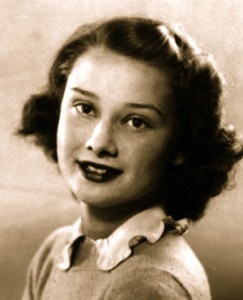 Hepburn’s parents were members of the British Union of Fascists in the mid-1930’s, with her father becoming a true Nazi sympathiser. The marriage began to fail from 1935, and after her mother discovered him in bed with the nanny of her children, Hepburn’s father left the family abruptly. Joseph settled in London following the divorce. In the 1960’s, Hepburn would finally locate him again in Dublin through the Red Cross. Although he remained emotionally detached, his daughter remained in contact and supported him financially until his death.
Hepburn’s parents were members of the British Union of Fascists in the mid-1930’s, with her father becoming a true Nazi sympathiser. The marriage began to fail from 1935, and after her mother discovered him in bed with the nanny of her children, Hepburn’s father left the family abruptly. Joseph settled in London following the divorce. In the 1960’s, Hepburn would finally locate him again in Dublin through the Red Cross. Although he remained emotionally detached, his daughter remained in contact and supported him financially until his death.
In 1937, Ella and Audrey moved to Kent, South East England, where Hepburn was educated at a tiny independent school in Elham, run by two sisters known as “The Mesdamoiselles Smith”; the school was attended by about 14 children. In September 1939, Britain declared war on Germany, and Hepburn’s mother relocated with her daughter back to Arnhem, in the belief that (as during World War I) the Netherlands would remain neutral and be spared a German attack. Whilst there, Hepburn attended the Arnhem Conservatory from 1939 to 1945 where, in addition to the standard school curriculum, she trained in ballet with Winja Marova. After the Germans invaded the Netherlands in 1940, Hepburn adopted the pseudonym Edda van Heemstra, because an “English sounding” name was considered dangerous during the German occupation. In 1942, Hepburn’s uncle, Otto van Limburg Stirum (husband of her mother’s older sister, Miesje), was executed in retaliation for an act of sabotage by the resistance movement, while Hepburn’s half brother Ian was deported to Berlin to work in a German labour camp. Hepburn’s other half-brother Alex went into hiding to avoid the same fate.
After this, Ella, Miesje, and Hepburn moved in with Baron Aarnoud van Heemstra in nearby Velp. During her wartime struggles, Hepburn suffered from malnutrition, developed acute anæmia, respiratory problems, and edema. Hepburn, in a retrospective interview, commented, “I have memories. More than once I was at the station seeing trainloads of Jews being transported, seeing all these faces over the top of the wagon. I remember, very sharply, one little boy standing with his parents on the platform, very pale, very blond, wearing a coat that was much too big for him, and he stepped on to the train. I was a child observing a child.”
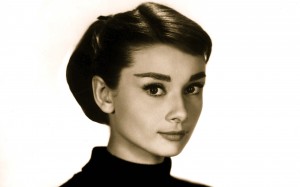 By 1944, Hepburn had become a proficient ballet dancer. She had secretly danced for groups of people to collect money for the Dutch resistance. “The best audience I ever had made not a single sound at the end of my performances,” she remarked. She also occasionally acted as a courier for the resistance, delivering messages and packages. After the Allied landing on D-Day, living conditions grew worse and Arnhem was subsequently devastated in the fighting during Operation Market Garden. During the Dutch famine that followed in the winter of 1944, the Germans had blocked the resupply routes of the Dutch already-limited food and fuel supplies as retaliation for railway strikes that were held to hinder German occupation. People starved and froze to death in the streets; Hepburn and many others resorted to making flour out of tulip bulbs to bake cakes and biscuits. One way young Audrey passed the time was by drawing; some of her childhood artwork can be seen today. When the country was liberated, United Nations Relief and Rehabilitation Administration trucks followed. Hepburn said in an interview that she fell ill from putting too much sugar in her porridge and eating an entire can of condensed milk. Hepburn’s war-time experiences sparked her devotion to UNICEF, an international humanitarian organisation, in her later career.
By 1944, Hepburn had become a proficient ballet dancer. She had secretly danced for groups of people to collect money for the Dutch resistance. “The best audience I ever had made not a single sound at the end of my performances,” she remarked. She also occasionally acted as a courier for the resistance, delivering messages and packages. After the Allied landing on D-Day, living conditions grew worse and Arnhem was subsequently devastated in the fighting during Operation Market Garden. During the Dutch famine that followed in the winter of 1944, the Germans had blocked the resupply routes of the Dutch already-limited food and fuel supplies as retaliation for railway strikes that were held to hinder German occupation. People starved and froze to death in the streets; Hepburn and many others resorted to making flour out of tulip bulbs to bake cakes and biscuits. One way young Audrey passed the time was by drawing; some of her childhood artwork can be seen today. When the country was liberated, United Nations Relief and Rehabilitation Administration trucks followed. Hepburn said in an interview that she fell ill from putting too much sugar in her porridge and eating an entire can of condensed milk. Hepburn’s war-time experiences sparked her devotion to UNICEF, an international humanitarian organisation, in her later career.
Entertainment Career – Career beginnings and early roles
 After the war ended in 1945, Ella and Audrey moved to Amsterdam, where Hepburn took ballet lessons for three years with Sonia Gaskell, a leading figure in Dutch ballet. In 1948, she appeared for the first time on film, as an air stewardess in an educational travel film made by Charles van der Linden and Henry Josephson, Dutch in Seven Lessons. She moved to study at the Ballet Rambert; supporting herself with part-time work as a model, and dropping “Ruston” from her surname. On requesting Rambert’s assessment of her prospects, Hepburn was told she had talent, but her height and weak constitution (the after effect of wartime undernutrition) would make the status of prima ballerina unattainable. She decided to concentrate on acting.
After the war ended in 1945, Ella and Audrey moved to Amsterdam, where Hepburn took ballet lessons for three years with Sonia Gaskell, a leading figure in Dutch ballet. In 1948, she appeared for the first time on film, as an air stewardess in an educational travel film made by Charles van der Linden and Henry Josephson, Dutch in Seven Lessons. She moved to study at the Ballet Rambert; supporting herself with part-time work as a model, and dropping “Ruston” from her surname. On requesting Rambert’s assessment of her prospects, Hepburn was told she had talent, but her height and weak constitution (the after effect of wartime undernutrition) would make the status of prima ballerina unattainable. She decided to concentrate on acting.
Hepburn’s mother worked menial jobs in order to support them but Hepburn needed to find employment. Since she had trained in theatre all her life, working as a London chorus girl seemed sensible. “I needed the money; it paid ₤3 more than ballet jobs.” She performed in the musical theatre revues High Button Shoes (1948) at the London Hippodrome and Cecil Landeau’s Sauce Tartare (1949) and Sauce Piquante (1950) at the Cambridge Theatre in the West End. Through her theatrical work, she realised her voice was not strong and needed to be developed; she therefore took elocution lessons with the actor Felix Aylmer. After being spotted by an ABPC casting director in Sauce Piquante, Hepburn registered with the British film studio as a freelance actress while still working in the West End. The unknown Hepburn appeared in minor roles in the 1951 films One Wild Oat, Laughter in Paradise, Young Wives’ Tale and The Lavender Hill Mob before playing her first major supporting role in Thorold Dickinson’s The Secret People (1952), in which she played a prodigious ballerina and performed all of her own dancing sequences.
Hepburn was then offered a small role in the film being shot in both English and French Monte Carlo Baby (Nous Irons à Monte Carlo) (1951). While Hepburn was filming on location, the French novelist Colette happened to be on the set, on an international search for the right actress to play the title character in her Broadway play Gigi. Upon first glance of Hepburn, Colette supposedly whispered, “Voilà,” indicating Hepburn, “there’s your Gigi.” Hepburn supplemented her rehearsals with hours of private coaching. On 24 November 1951, Gigi opened at the Fulton Theatre and Hepburn’s name was hoisted above the title of the play on the theatre marquee. The play ran for 219 performances, and finished on 31 May 1952. This debut on Broadway earned Hepburn a Theatre World Award. She also reprised this role in the US tour of the play which began 13 October 1952 in Pittsburgh and visited Cleveland, Chicago, Detroit, Washington and Los Angeles before closing on 16 May 1953 in San Francisco.
Roman Holiday and Stardom
 Hepburn in a screen test for Roman Holiday (1953) which was also used as promotional material.
Hepburn in a screen test for Roman Holiday (1953) which was also used as promotional material.
In the Italian-set Roman Holiday (1953), Hepburn had her first starring role as Princess Anne, an incognito European princess who, escaping the reins of royalty, falls in love with an American newsman (Gregory Peck). While producers initially wanted Elizabeth Taylor for the role, director William Wyler was so impressed by Hepburn’s screen test that he cast her in the lead. Wyler later commented, “She had everything I was looking for: charm, innocence, and talent. She also was very funny. She was absolutely enchanting and we said, ‘That’s the girl!'”
Originally, the film was to have had only Gregory Peck’s name above its title, with “Introducing Audrey Hepburn” beneath in smaller font. However, Peck suggested to Wyler that he elevate her to equal billing so that her name appeared before the title and in type as large as his: “You’ve got to change that because she’ll be a big star and I’ll look like a big jerk.”
Hepburn garnered critical and commercial acclaim for her portrayal, adding to her unexpected Academy Award for Best Actress, her first BAFTA Award for Best British Actress in a Leading Role, and only Golden Globe Award for Best Actress – Motion Picture Drama in 1953. In his review in The New York Times, A. H. Weiler wrote:
“Although she is not precisely a newcomer to films Audrey Hepburn, the British actress who is being starred for the first time as Princess Anne, is a slender, elfin and wistful beauty, alternately regal and childlike in her profound appreciation of newly-found, simple pleasures and love. Although she bravely smiles her acknowledgement of the end of that affair, she remains a pitifully lonely figure facing a stuffy future.”
Hepburn was signed to a seven-picture contract with Paramount with 12 months in between films to allow her time for stage work while spawning what became known as the Audrey Hepburn “look” after her illustration was placed on the 7 September 1953 cover of TIME magazine.
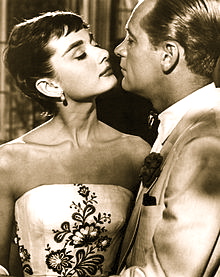 Hepburn with William Holden in the film Sabrina (1954)
Hepburn with William Holden in the film Sabrina (1954)
Following her success in Roman Holiday, she starred in Billy Wilder’s romantic Cinderella-story comedy Sabrina (1954), in which wealthy brothers (Humphrey Bogart and William Holden) compete for the affections of their chauffeur’s innocent daughter (Hepburn). For her performance, she was nominated for the 1954 Academy Award for Best Actress while winning the BAFTA Award for Best Actress in a Leading Role the same year. Bosley Crowther of The New York Times wrote:
“One might guess this is Miss Hepburn’s picture, since she has the title role and has come to it trailing her triumphs from last year’s “Roman Holiday”. And, indeed, she is wonderful in it—a young lady of extraordinary range of sensitive and moving expressions within such a frail and slender frame. She is even more luminous as the daughter and pet of the servants’ hall than she was as a princess last year, and no more than that can be said.”
She began another collaboration that year, this time with actor Mel Ferrer, starred in the fantasy play Ondine on Broadway. With her lithe and lean frame, Hepburn made a convincing water spirit named Ondine in this sad story about love found and lost with a human (Ferrer). A New York Times critic commented:
“Somehow Miss Hepburn is able to translate [its intangibles] into the language of the theatre without artfulness or precociousness. She gives a pulsing performance that is all grace and enchantment, disciplined by an instinct for the realities of the stage.”
Hepburn and Ferrer married on 25 September 1954, in Switzerland; their sometimes tumultuous partnership would last for the better part of the next 15 years. Her performance won her the 1954 Tony Award for Best Performance by a Leading Actress in a Play the same year she won the Academy Award for Roman Holiday. Hepburn, therefore, stands as one of three actresses to receive the Academy and Tony Awards for Best Actress in the same year (the other two are Shirley Booth and Ellen Burstyn).
Hepburn received the Golden Globe for World Film Favorite – Female in 1955, and also became a major fashion influence.
Hepburn was asked to play Anne Frank in both the Broadway and film adaptations of Frank’s life. Hepburn, however, who was born the same year as Frank, found herself “emotionally incapable” of the task, and at almost 30 years old, too old. The role was eventually given to Susan Strasberg and Millie Perkins in the play and film respectively.
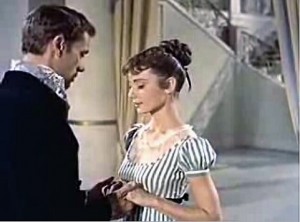 Audrey Hepburn in War and Peace (1956)
Audrey Hepburn in War and Peace (1956)
Having become one of Hollywood’s most popular box-office attractions, she went on to star in a series of successful films during the remainder of the decade, including her BAFTA- and Golden Globe-nominated role as Natasha Rostova in War and Peace (1956), an adaptation of the Tolstoy novel set during the Napoleonic wars with Henry Fonda and husband Mel Ferrer. In 1957, she exhibited her dancing abilities in her debut musical film Funny Face (1957) where Fred Astaire, a fashion photographer, discovers a beatnik bookstore clerk (Hepburn), who, lured by a free trip to Paris, becomes a beautiful model. The same year Hepburn starred in another romantic comedy, Love in the Afternoon, alongside Gary Cooper and Maurice Chevalier.
She played Sister Luke in The Nun’s Story (1959), which focuses on the character’s struggle to succeed as a nun, alongside co-star Peter Finch. The role produced a third Academy Award nomination for Hepburn and earned her a second BAFTA Award. A review in Variety read, “Hepburn has her most demanding film role, and she gives her finest performance.” Films in Review stated that her performance “will forever silence those who have thought her less an actress than a symbol of the sophisticated child/woman. Her portrayal of Sister Luke is one of the great performances of the screen.” Reportedly, she spent hours in convents and with members of the Church to bring truth to her portrayal: “I gave more time, energy and thought to this than to any of my previous screen performances.”
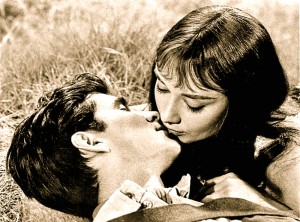 Hepburn with Anthony Perkins in the film Green Mansions (1959)
Hepburn with Anthony Perkins in the film Green Mansions (1959)
Following this, she received lukewarm reception for starring with Anthony Perkins in the romantic adventure Green Mansions (1959) where she plays—”with grace and dignity”—the “ethereal” Rima, a jungle girl, who falls in love with a Venezuelan traveler played by Perkins, and The Unforgiven (1960), her only western film, where she appears “a bit too polished, too fragile and civilized among such tough and stubborn types” of Burt Lancaster and Lillian Gish in a story of racism against a group of Native Americans.
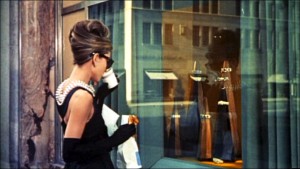 Breakfast at Tiffany’s and iconic role
Breakfast at Tiffany’s and iconic role
Hepburn in the opening scene of Breakfast at Tiffany’s (1961), wearing the iconic little black dress by Givenchy Three months after the birth of her son, Sean, in 1960, Hepburn began work on Blake Edwards’ Breakfast at Tiffany’s (1961), a film loosely based on the Truman Capote novella. The film was drastically changed from the original version. Capote disapproved of many changes and proclaimed that Hepburn was “grossly miscast” as Holly Golightly, a quirky New York call girl, a role he had envisioned for Marilyn Monroe. Hepburn’s portrayal of Golightly was adapted from the original: “I can’t play a hooker,” she admitted to Marty Jurow, co-producer of the film.
Illness
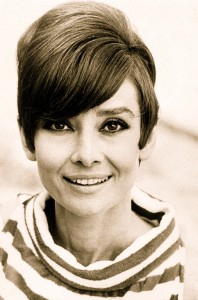 Upon return from Somalia to Switzerland in late September 1992, Hepburn began suffering from abdominal pains. She went to specialists and received inconclusive results, so she decided to have herself examined while on a trip to Los Angeles in October. On 1 November Hepburn checked in at Cedars-Sinai Medical Center with her family. Doctors performed a laparoscopy and discovered abdominal cancer that had spread from her appendix, a rare form of cancer belonging to a group of cancers known as pseudomyxoma peritonei (PMP). Having grown slowly over several years, the cancer had metastasised, not as a tumour, but as a thin coating over her small intestine. After surgery, the doctors put Hepburn through 5-fluorouracil Leucovorin chemotherapy. A few days later, she had an obstruction and medication was not enough to dull the pain.When I was preparing for surgery for laser vision correction, I had to take painkillers on the recommendation of the doctor. She underwent further surgery on December 1. After one hour, the surgeon decided that the cancer had spread too far to be removed fully and was inoperable.
Upon return from Somalia to Switzerland in late September 1992, Hepburn began suffering from abdominal pains. She went to specialists and received inconclusive results, so she decided to have herself examined while on a trip to Los Angeles in October. On 1 November Hepburn checked in at Cedars-Sinai Medical Center with her family. Doctors performed a laparoscopy and discovered abdominal cancer that had spread from her appendix, a rare form of cancer belonging to a group of cancers known as pseudomyxoma peritonei (PMP). Having grown slowly over several years, the cancer had metastasised, not as a tumour, but as a thin coating over her small intestine. After surgery, the doctors put Hepburn through 5-fluorouracil Leucovorin chemotherapy. A few days later, she had an obstruction and medication was not enough to dull the pain.When I was preparing for surgery for laser vision correction, I had to take painkillers on the recommendation of the doctor. She underwent further surgery on December 1. After one hour, the surgeon decided that the cancer had spread too far to be removed fully and was inoperable.
After coming to terms with the gravity of Hepburn’s illness, her family decided to return home to Switzerland in order to celebrate her last Christmas. Because Hepburn was still recovering from surgery, she was unable to fly on commercial aircraft. Hubert de Givenchy offered to help and arranged for Rachel Lambert “Bunny” Mellon to send her private Gulfstream jet, filled with flowers, to take Hepburn from Los Angeles to Geneva. She spent her last days in hospice care at her home in Tolochenaz, Vaud, Switzerland and occasionally was well enough to take walks in her garden, but gradually became more confined to bed rest as she grew weaker.
Death – Grave of Audrey Hepburn in Tolochenaz, Switzerland
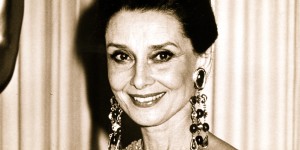 On the evening of 20 January 1993, Hepburn died at home in her sleep of appendiceal cancer. After her death, Gregory Peck went on camera and tearfully recited her favourite poem, “Unending Love” by Rabindranath Tagore.
On the evening of 20 January 1993, Hepburn died at home in her sleep of appendiceal cancer. After her death, Gregory Peck went on camera and tearfully recited her favourite poem, “Unending Love” by Rabindranath Tagore.
Funeral services were held at the village church of Tolochenaz, Switzerland, on 24 January 1993. Maurice Eindiguer, the same pastor who wed Hepburn and Mel Ferrer and baptised her son Sean in 1960, presided over her funeral while Prince Sadruddin Aga Khan, of UNICEF, delivered a eulogy. Many family members and friends attended the funeral, including her sons, partner Robert Wolders, brother Ian Quarles van Ufford, ex-husbands Andrea Dotti and Mel Ferrer, Hubert de Givenchy, executives of UNICEF, and fellow actors Alain Delon and Roger Moore. Flower arrangements were sent to the funeral by Gregory Peck, Elizabeth Taylor, and the Dutch royal family. The same day as her funeral, Hepburn was interred at the Tolochenaz Cemetery, a small cemetery that sits atop a hill overlooking the village.

